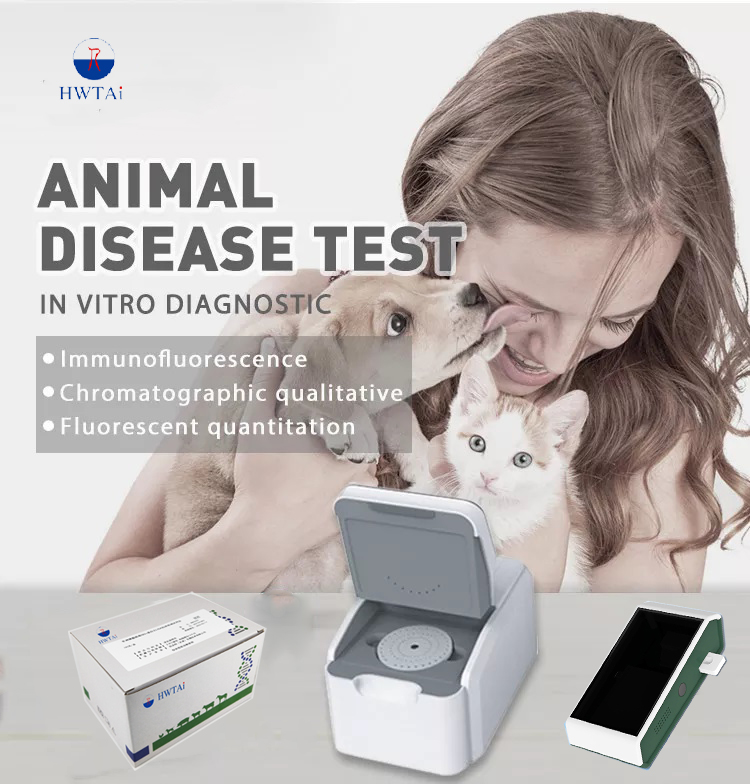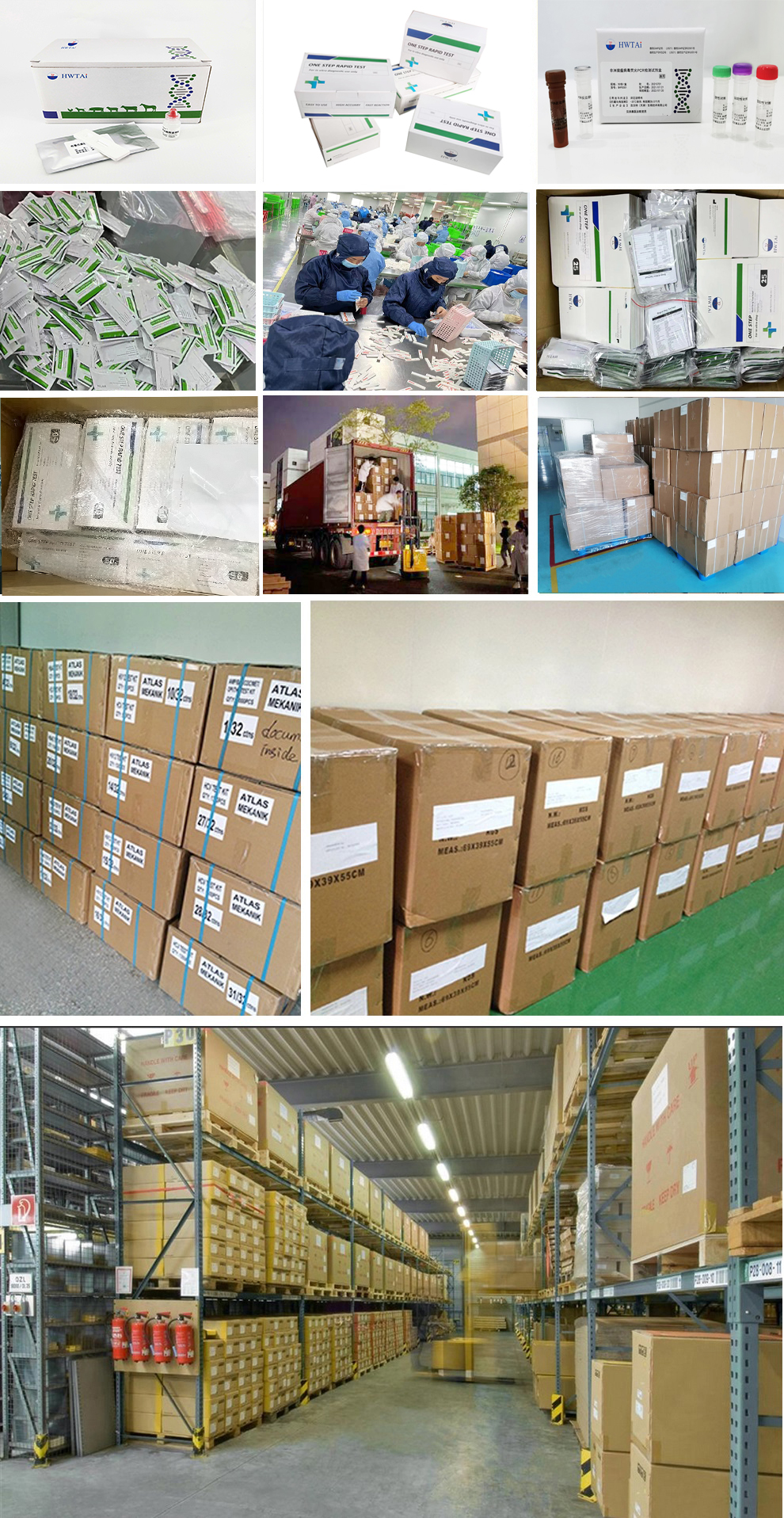Canine Adenovirus Antigen Test CAV Ag is an acute septicemic infectious disease caused by canine adenovirus (CAV) type-I infection. Its clinical symptoms mostly appear in dogs under the age of 1, mainly presenting symptoms such as high fever, abdominal pain, vomiting, diarrhoea, watery or purulent nasal discharge, conjunctivitis and so on.The prominent features were corneal blue, jaundice and anemia.Acute cases often die within 24 hours and should be distinguished clinically from canine distemper.


Introduction
Canine Adenovirus Antigen Test CAV Ag is an acute septicemic Infectious disease caused by canine adenovirus (CAV) type-I infection. Its clinical symptoms mostly appear in dogs under the age of 1, mainly presenting symptoms such as high fever, abdominal pain, vomiting, diarrhoea, watery or purulent nasal discharge, conjunctivitis and so on.The prominent features were corneal blue, jaundice and anemia.Acute cases often die within 24 hours and should be distinguished clinically from canine distemper.
Product Name | Canine Adenovirus Antigen Test CAV Ag |
Specimen | Dog’s eyes, nasal cavities, and anus. |
Assay Time | 5-10 minutes |
MOQ | 800 test kits |
Delivery time | 1 week after Get payment |
Packing | 10 test kits/Packing box |
Storage Temperature | 2-30°C, DO NOT FREEZE. Do not store the test kit in direct sunlight. |
Shelf Life | 18 months |
Benefits
1. One-step whole blood, serum and plasma testing.
2. Simple operation, non-professional on-site inspection.
3. The detection process is fast, and the result will be displayed in about 15 minutes.
4. The test time is less than or equal to 10 seconds, and it can detect 270 samples per hour at the fastest.
5. The detection equipment is compact, easy to carry, mobile terminal operation, cloud platform quality control.
6. The detection sensitivity is high, comparable to that of enzyme-labeled kits.
Components
• Test devices
• Droppers
• Single Buffer
• IFU
Principle
Canine Adenovirus Antigen Test CAV Ag is based on sandwich lateral flow immunochromatographic assay. The test device has a testing window for the observation of assay running and result reading. The testing window has an invisible T (test) zone and a C (control) zone before running the assay. When the treated sample was applied into the sample hole on the device, the liquid will laterally flow through the surface of the test strip and react with the pre-coated monoclonal antibodies. If there is CAV antigen in the specimen, a visible T line will appears. The C line should always appear after a sample is applied, which indicates a valid result. By this means, the device can accurately indicate the presence of CAV antigen in the specimen.
Strage and stablity
The kit can be stored at room temperature (2-30°C). The test kit is stable through the expiration date (18 months) marked on the package label. DO NOT FREEZE. Do not store the test kit in direct sunlight.
Other Items
Canine Rapid test Kits | |
Canine Distemper Virus Antigen Test | Canine Parvo/Corona Ag Combo Test |
Canine Distemper Virus Antibody Test | Canine Anaplasma Antibody Test |
Canine Parvo Virus Antigen Test | Canine Rotavirus Antigen Test |
Canine Parvo Virus AntibodyTest | CPV/CDV Antibody Combo Test |
Canine Influenza Virus Ag Rapid Test | Canine Distemper/Adeno Ag Combo Test |
Canine Coronavirus Antigen Test | Canine Parvo-Corona-Rota Virus Antigen Combo Test |
Canine Parainfluenza Virus Antigen Test | CPV/CCV/Giardia Combo Test |
Canine Adenovirus II Antigen Test | Lyme Disease Antibody Test |
Canine Adenovirus I Antigen Test | Pregnancy Relaxin Test |
Canine CRP Test | Canine Giardia Antigen Test |
Canine Toxoplasma Antibody Test | CDV/CPIV Ag combo Test |
Canine Heartworm Antigen Test | Canine Distemper/Adeno/Influenza Combo Test |
Leishmania canis Antibody Test | Canine Infectious Hepatitis/Parvo Virus/Distemper Virus IgG combo test |
Canine Brucella Antibody Test | Canine Ehrlichia/Anaplasma Combo Test |
Ehrlichia Canis Antibody Test | Ehrlichia/Lyme/Anaplasma Combo Test |
Canine Leptospirosis Antibody Test | Ehrlichia/Lyme/Anaplasma/Heartworm Combo Test |
Babesia gibsoni Antibody Test | Ehrlichia/Babesia/Anaplasma Combo Test |
Rabies Antigen Test | Ehrlichia/Babesia/Anaplasma/Heartworm Combo Test |
Rabies Antibody Test | |
Test Procedure
-Collect dog’s ocular, nasal or anus secretions with the cotton Swab and make the Swab wet sufficiently.
-Insert the Swab into the provided assay buffer tube. Agitates it to get efficient sample extraction.
-If using serum or plasma specimen, use the dropper to collect the specimen.
-Place 3 drops of serum or plasma into the assay buffer tube for dilution. The diluted sample is used as sample extraction.
-Take out the test card from the foil pouch and place it horizontally.
-Suck the treated sample extraction from the assay buffer tube and place 3 drops into each sample hole “S” of the test card.
-Interpret the result in 5-10 minutes. Result after 10 minutes is considered as invalid.

INTERPRETATION OF ASSAY RESULT
- Positive (+): Whether the T line is clear or fuzzy, the "C" line and the region "T" line are present.
- Negative (-): Shows only the sharp C line. No T line.
- Invalid: no color lines in zone C. Whether the T line appears or not.
Precaution
-All reagents must be tested at room temperature.
-Do not take the test tape out of the bag before use.
-Do not use the test after the expiration date.
-The components in this kit have been used as a standard batch processing unit for quality control testing. Do not mix parts of different batch numbers.
-All specimens are potentially infected. Must be treated strictly in accordance with the local country's rules and regulations.
Limitation
Canivet cdv-cav-cvi-cpiv antigen combination test is only used for in vitro veterinary diagnosis. All results should be considered with other clinical data and can be discussed with the veterinarian. When a positive result is detected, it is recommended to use further confirmation methods such as RT-PCR.


Contact: Neo
Phone: 008615867460640
E-mail: Info@Hwtai.com
Whatsapp:008615867460640
Add: Building 2, Xinmao Qilu Science Technology Industrial Park, Tianqiao District, Jinan City, Shandong Province,China.
We chat
